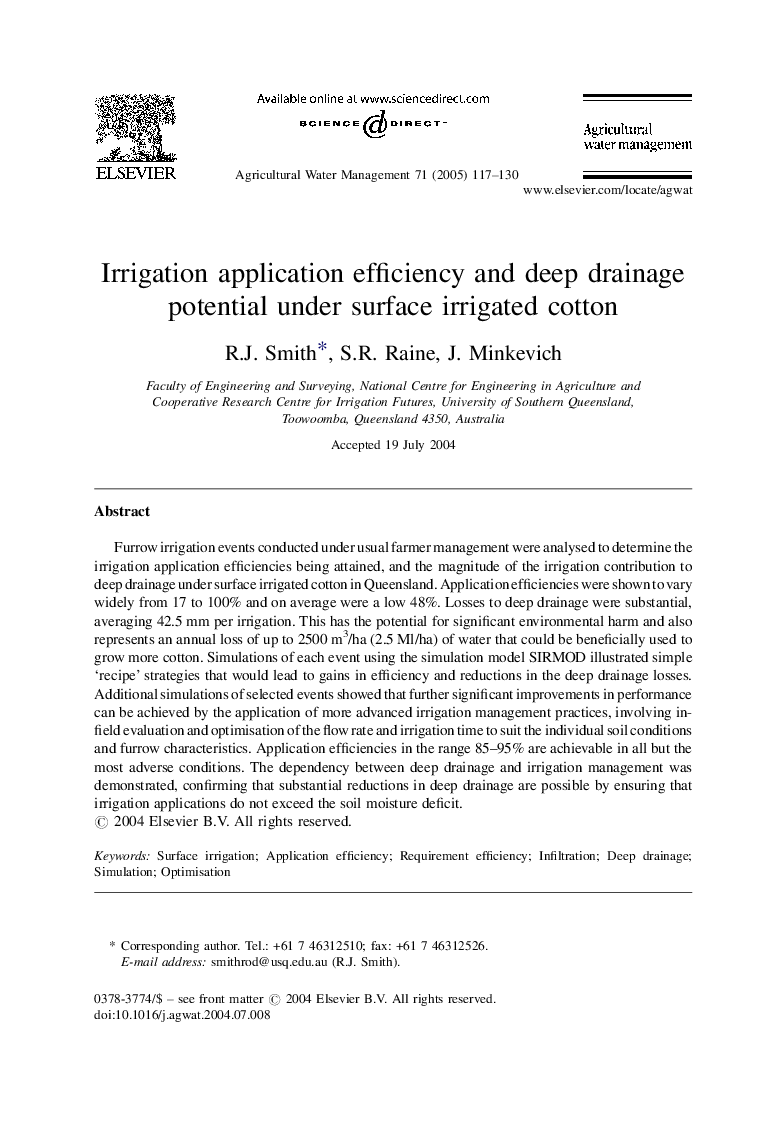| Article ID | Journal | Published Year | Pages | File Type |
|---|---|---|---|---|
| 9467443 | Agricultural Water Management | 2005 | 14 Pages |
Abstract
Furrow irrigation events conducted under usual farmer management were analysed to determine the irrigation application efficiencies being attained, and the magnitude of the irrigation contribution to deep drainage under surface irrigated cotton in Queensland. Application efficiencies were shown to vary widely from 17 to 100% and on average were a low 48%. Losses to deep drainage were substantial, averaging 42.5Â mm per irrigation. This has the potential for significant environmental harm and also represents an annual loss of up to 2500Â m3/ha (2.5Â Ml/ha) of water that could be beneficially used to grow more cotton. Simulations of each event using the simulation model SIRMOD illustrated simple 'recipe' strategies that would lead to gains in efficiency and reductions in the deep drainage losses. Additional simulations of selected events showed that further significant improvements in performance can be achieved by the application of more advanced irrigation management practices, involving in-field evaluation and optimisation of the flow rate and irrigation time to suit the individual soil conditions and furrow characteristics. Application efficiencies in the range 85-95% are achievable in all but the most adverse conditions. The dependency between deep drainage and irrigation management was demonstrated, confirming that substantial reductions in deep drainage are possible by ensuring that irrigation applications do not exceed the soil moisture deficit.
Related Topics
Life Sciences
Agricultural and Biological Sciences
Agronomy and Crop Science
Authors
R.J. Smith, S.R. Raine, J. Minkevich,
